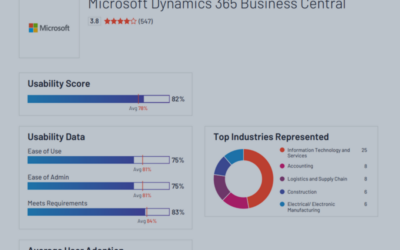Have you ever heard software referred to as SSOT, or a Single Source of Truth? In ERP, it’s not just a catch phrase, but something enormously relevant that can affect your business significantly. Let’s discuss.
What is Single Source of Truth?
You can accurately describe a software solution as an SSOT if it serves as a business’ central and primary source of all real-time data from every one of its departments. Every one of your team members should also go to this SSOT whenever they want to find reliable, real-time data.
In an ERP, ‘SSOT’ and ‘ERP’ are ideally the same. After all, an ERP by design unifies data and provides you with a view of data through a single pane of glass. While many SaaS’s now focus on the SSOT model, ERP is perhaps the most aligned with the core principle of SSOT and best equipped to make SSOT happen.
Why Should I Care About SSOT?
Why is this concept so important and how will it affect your business? Consider:
Using an ERP as Your Single Source of Truth Ensures Everyone Has the Same, Real-Time Data
Data siloed by departments is a thing of the past and one of the most common roadblocks to effective collaboration. With an ERP solution in place as your SSOT everyone is working with the same real-time business data.
ERP Empowers Better Decision Making
When you have access to real-time data in one place from a single source of truth, like an ERP solution, you are better positioned to make the right decisions for your company. That data is not only “real-time” but clean and consistent data, too.
ERP Makes Life Easier for Accounting
One department that suffered the longest before SSOT was your back office. Workflow differences from one department to the next would lead to dirty data, which then complicated things tremendously for your accounting team. With ERP in place to support SSOT principles, your accounting team is now empowered to do their jobs more effectively.
An ERP for Your Industry Can Cover All the Bases
One problem in SSOT in practice is that businesses need so many digital solutions to function these days. Unifying those in one place can be complex and integrations can be difficult. With an ERP designed for a specific industry, such as Manufacturing, a company can get most of what they need to run their business and won’t have to worry about translating data from one solution to the next.
Ready to see how ERP as a single source of truth can transform your business? Get in touch today.




